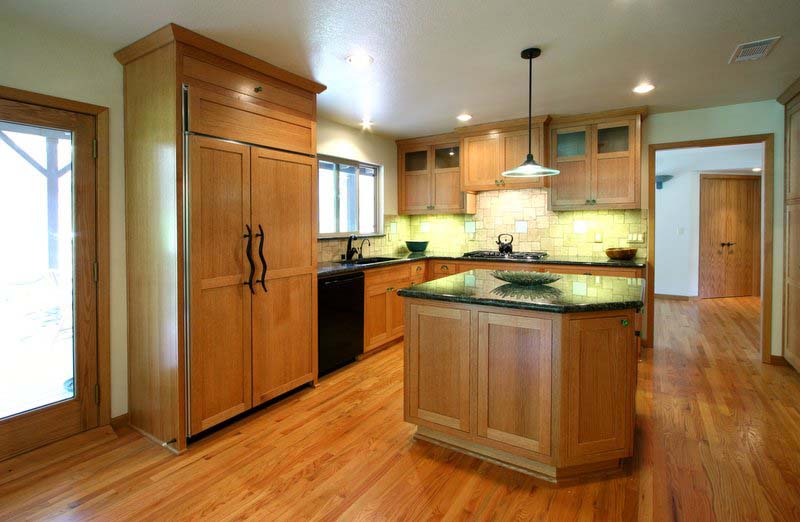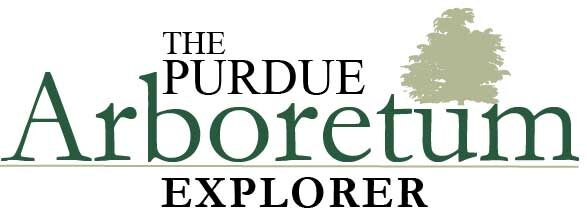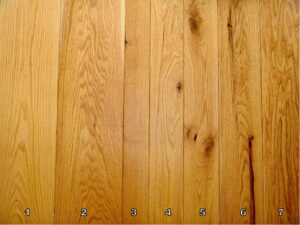Quercus rubra
Summary
“Red oak” is a term used in the lumber trade that refers to a category of lumber. This lumber category may contain as many as 17 different species of trees (Table 5). It constitutes about one-third of all the hardwood lumber produced. Northern red oak is the most preferred species. It ranges throughout the eastern United States and Canada, except the southern coastal planes. It does well on moist but well-drained soils, and it is associated with numerous other species. The largest tree reported is nearly 11 feet in diameter at 4½ feet above the ground.
Board 1 is wide and shows the beautiful light red color, coarse grain pattern, and a centered cathedral effect possible with red oak. The “U” or “V” shaped cathedral pattern is caused by cutting across the coarse growth rings. Pieces such as this one would be selected for specific applications. Board 2 is somewhat darker in color. It has a small mineral spot in the center and diffuse mineral along the left edge. A small section of white sapwood is present on the upper right corner of the board. Board 3 is quarter sawn. The amount of fleck can vary substantially, and it can be difficult to see without actually looking at a finished or wet board. Quartered and rift sawn oak are increasing in popularity. Boards 4 and 5 are more typical of common red oak lumber. Widths will range mostly from 4 to 10 inches wide with scattered knots and some edgewane or bark. An occasional dark mineral streak may be present. Small pin knots present at the bottom of Board 4 can be common in some trees. They are considered grading defects where clear parts are required; but in reality, they add character to many woodworking projects. Board 5 shows small worm holes near the bottom. These are considered defects in lumber grading and referred to as pin, spot, and shot worm holes but for certain applications, they could be quite decorative. Board 7 is clear but shows a diffuse mineral stain spread throughout much of the piece. Board 6 shows two holes caused by a borer and a dark streaks of mineral stain that resulted from the invasion by the insect. The amount of mineral allowed is limited by the grading rule.
History
American classic used in furniture, flooring, cabinetry, joinery and architectural millwork.
Color & Texture
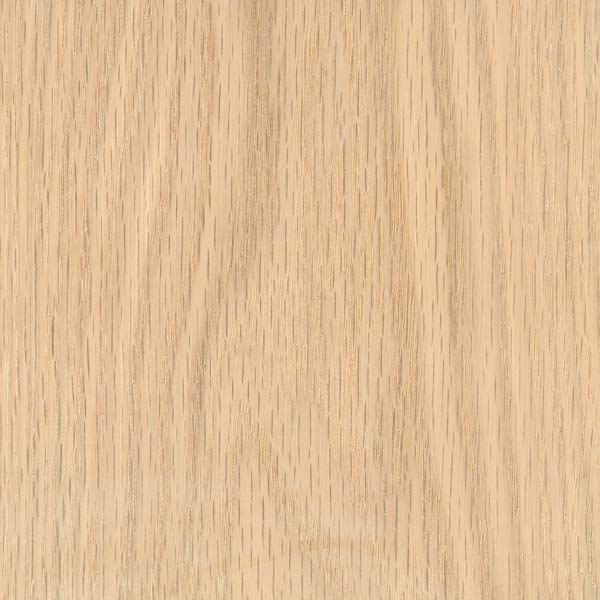
Red oak wood color can vary from a very light pink, which is currently preferred, to a blood red color. Many manufacturers who process red oak lumber into parts will sort it for color, particularly if glued-up panels are being produced
Anatomical and Microscopy
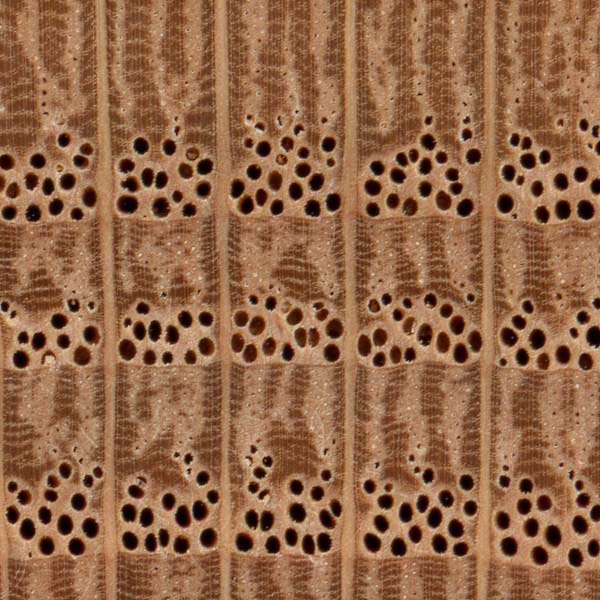
“ Ring-porous; 2-4 rows of large, exclusively solitary earlywood pores, numerous small latewood pores in radial arrangement; tyloses absent; growth rings distinct; rays large and visible without lens; apotracheal parenchyma diffuse-in-aggregates (short lines between rays).”
https://www.wood-database.com/red-oak/
Wood Properties
- Workability
- Best wood to plane and second best in boring.
- Strength
- Excellent mechanical strength properties
- Steam Bending
- One of the best woods for bending.
- Drying
- Lumber is difficult to dry, and a mild kiln schedule must be used.
- Shrinkage
- Substantial shrinkage but less than white oak and hickory.
- Decay
- Slight to no resistance to decay.
Products
Red oak is a “ standard” for the industry. First, it is our most abundant species. It has a beautiful grain pattern and color characteristics. As such, it is preferred for interior decorative applications ranging from furniture, cabinets, millwork, and caskets to hardwood flooring.
